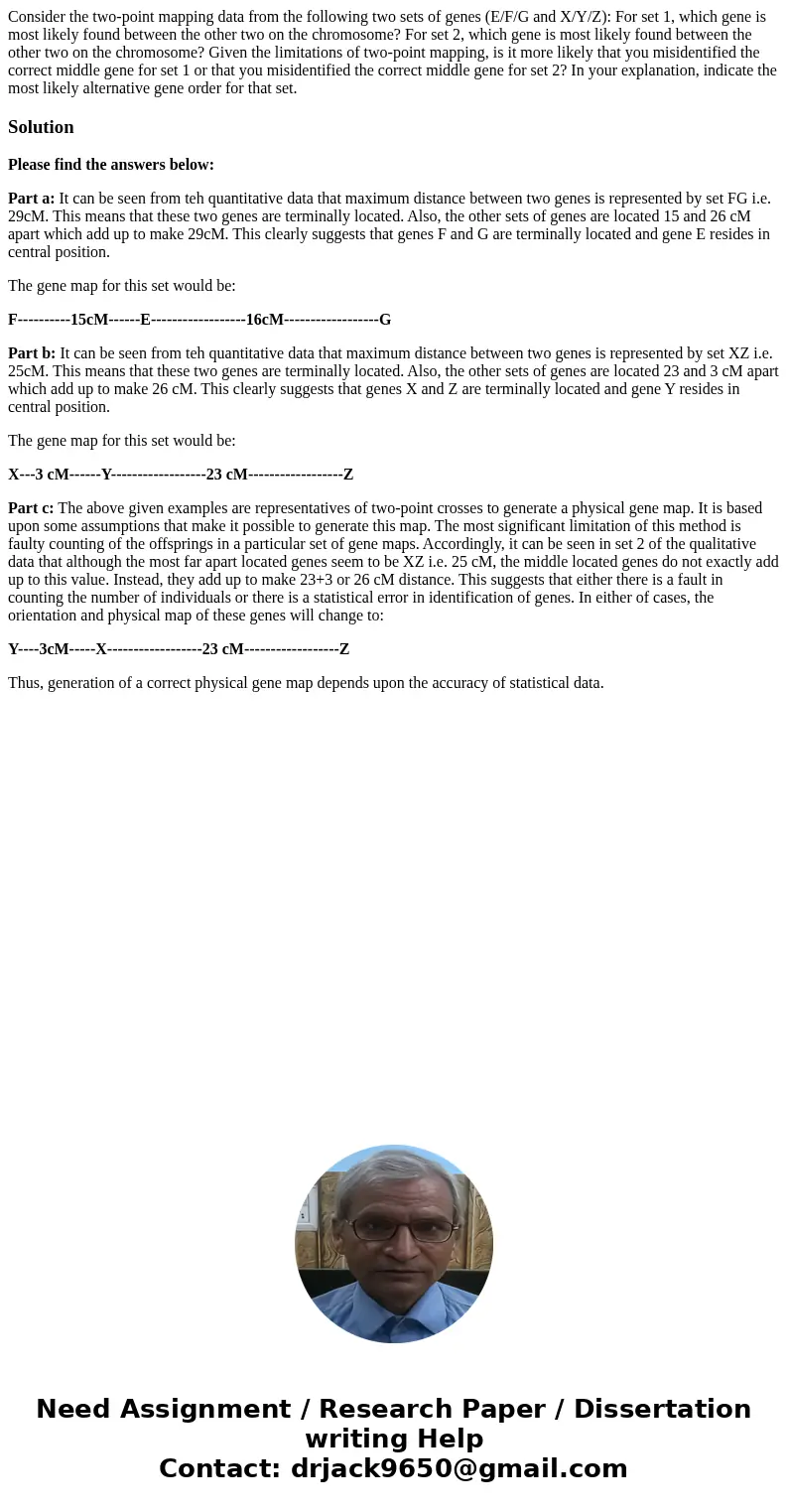Consider the twopoint mapping data from the following two se
Solution
Please find the answers below:
Part a: It can be seen from teh quantitative data that maximum distance between two genes is represented by set FG i.e. 29cM. This means that these two genes are terminally located. Also, the other sets of genes are located 15 and 26 cM apart which add up to make 29cM. This clearly suggests that genes F and G are terminally located and gene E resides in central position.
The gene map for this set would be:
F----------15cM------E------------------16cM------------------G
Part b: It can be seen from teh quantitative data that maximum distance between two genes is represented by set XZ i.e. 25cM. This means that these two genes are terminally located. Also, the other sets of genes are located 23 and 3 cM apart which add up to make 26 cM. This clearly suggests that genes X and Z are terminally located and gene Y resides in central position.
The gene map for this set would be:
X---3 cM------Y------------------23 cM------------------Z
Part c: The above given examples are representatives of two-point crosses to generate a physical gene map. It is based upon some assumptions that make it possible to generate this map. The most significant limitation of this method is faulty counting of the offsprings in a particular set of gene maps. Accordingly, it can be seen in set 2 of the qualitative data that although the most far apart located genes seem to be XZ i.e. 25 cM, the middle located genes do not exactly add up to this value. Instead, they add up to make 23+3 or 26 cM distance. This suggests that either there is a fault in counting the number of individuals or there is a statistical error in identification of genes. In either of cases, the orientation and physical map of these genes will change to:
Y----3cM-----X------------------23 cM------------------Z
Thus, generation of a correct physical gene map depends upon the accuracy of statistical data.

 Homework Sourse
Homework Sourse